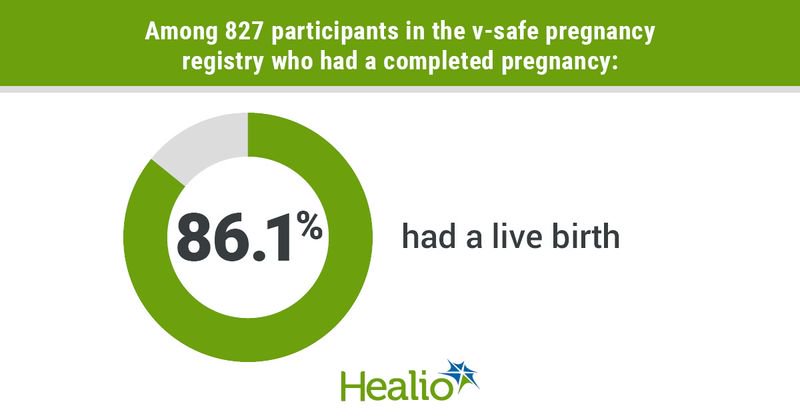Preliminary data show mRNA COVID-19 vaccines safe during pregnancy
The proportions of adverse outcomes among pregnant patients who received a messenger RNA, or mRNA, COVID-19 vaccine and their infants were similar to incidences reported before the pandemic, according to preliminary data.
The findings were recently published in The New England Journal of Medicine.

“Postauthorization monitoring in pregnant persons is necessary to characterize the safety of these new COVID-19 vaccines, which use mRNA, lipid nanoparticles and state-of-the-art manufacturing processes,” Tom T. Shimabukuro, MD, MPH, MBA, deputy director of the CDC’s Immunization Safety Office, and colleagues wrote. “Furthermore, establishing their safety profiles is critical to inform recommendations on maternal vaccination against COVID-19.”
Shimabukuro and colleagues used data from the CDC’s smartphone-based tool known as v-safe and the Vaccine Adverse Event Reporting System (VAERS) from Dec. 14, 2020, to Feb. 28, 2021. The study included participants aged 16 to 54 years who received the Pfizer-BioNTech or Moderna vaccine and had a completed pregnancy — meaning live-born infant, miscarriage, abortion or stillbirth — at the time of data analysis. Pregnancy and neonatal outcomes of interest included miscarriage, stillbirth, preterm birth, congenital anomalies, small size for gestational age and neonatal death.
There were 35,691 participants in the v-safe surveillance system who indicated they were pregnant and 3,958 participants who enrolled in the v-safe pregnancy registry.
Among 827 participants in the v-safe pregnancy registry who had a completed pregnancy, 86.1% had a live birth. Data further showed that 98.3% of live births occurred among participants who received the vaccine during the third trimester.
In the v-safe pregnancy registry, there were 104 miscarriages, 92.3% of which occurred before 13 weeks of gestation. There also were 46 miscarriages reported to the VAERS, which the researchers wrote was the most frequently reported pregnancy-related adverse event in the database.
Shimabukuro and colleagues did not match the study population to comparators in previously published studies for age, race and ethnicity or other demographic or clinical factors. However, they noted that 12.6% of participants in the v-safe pregnancy registry reported a miscarriage before 20 weeks compared with 10% to 26% of participants in other published studies. In addition, there were similar outcomes among participants in the v-safe pregnancy registry vs. participants in other published studies for stillbirth (0.1% vs. < 1%), preterm birth (9.4% vs. 8% to 15%), small size for gestational age (3.2% vs. 3.5%) and congenital anomalies (2.2% vs. 3%).
There were no incidences of neonatal death among participants in the v-safe pregnancy registry, according to the researchers.
“Early data from the v-safe surveillance system, the v-safe pregnancy registry, and the VAERS do not indicate any obvious safety signals with respect to pregnancy or neonatal outcomes associated with COVID-19 vaccination in the third trimester of pregnancy,” the researchers wrote. “Continued monitoring is needed to further assess maternal, pregnancy, neonatal, and childhood outcomes associated with maternal COVID-19 vaccination, including in earlier stages of pregnancy and during the preconception period.”


